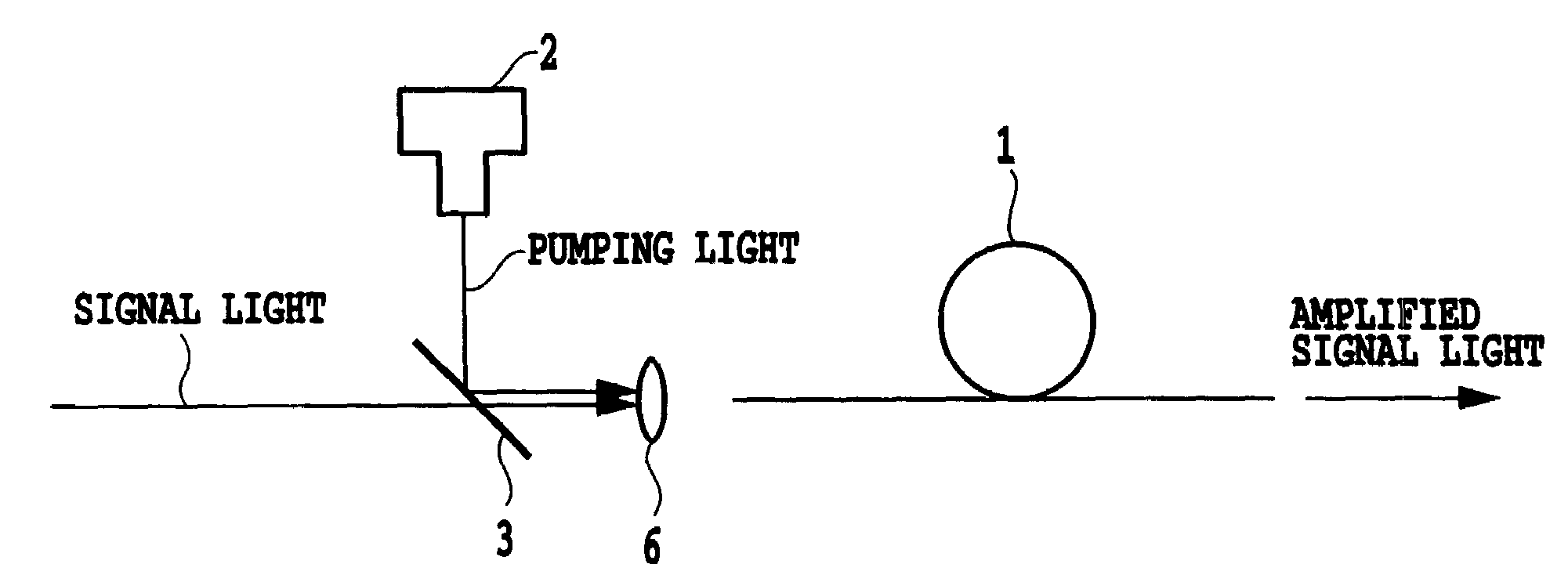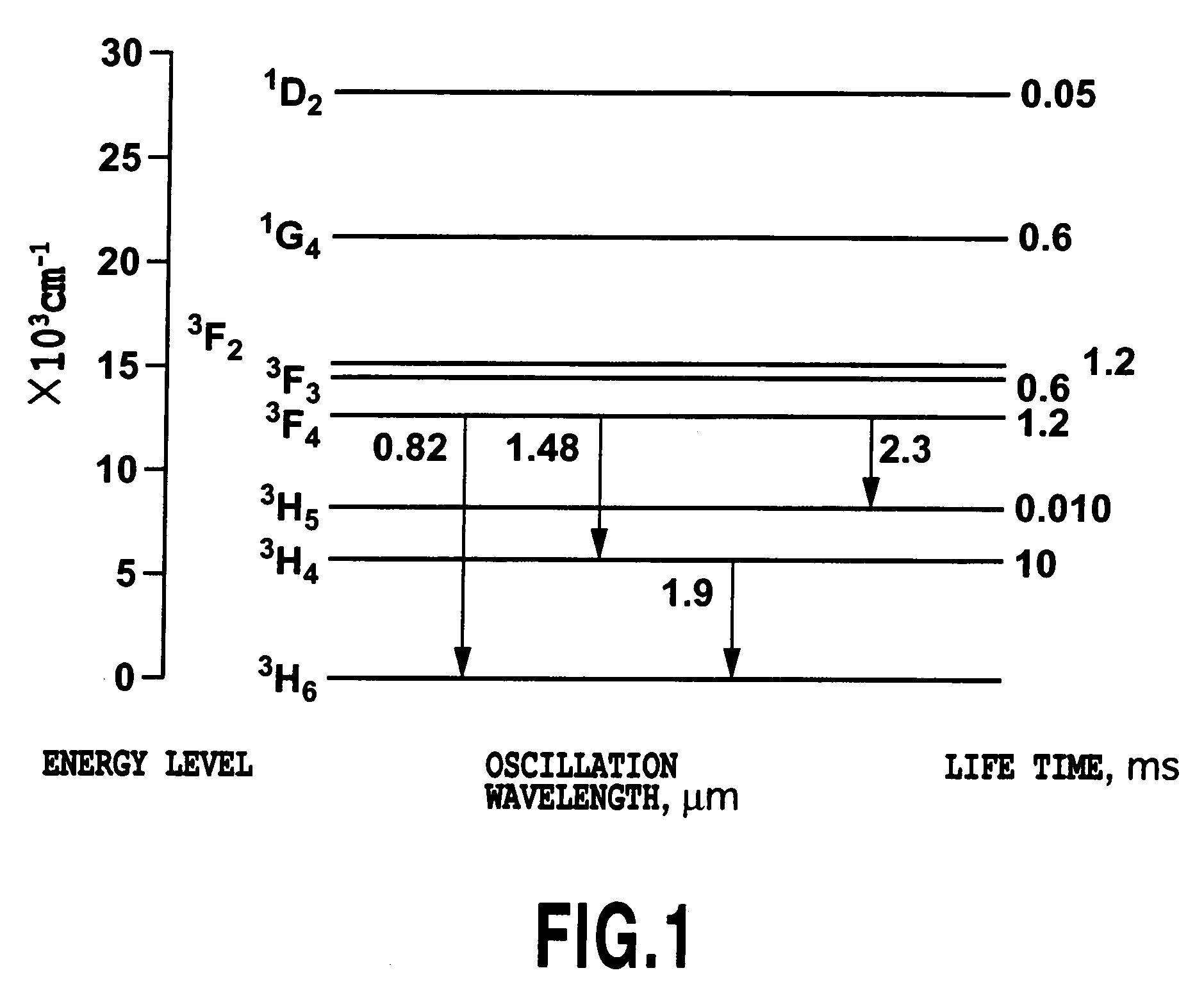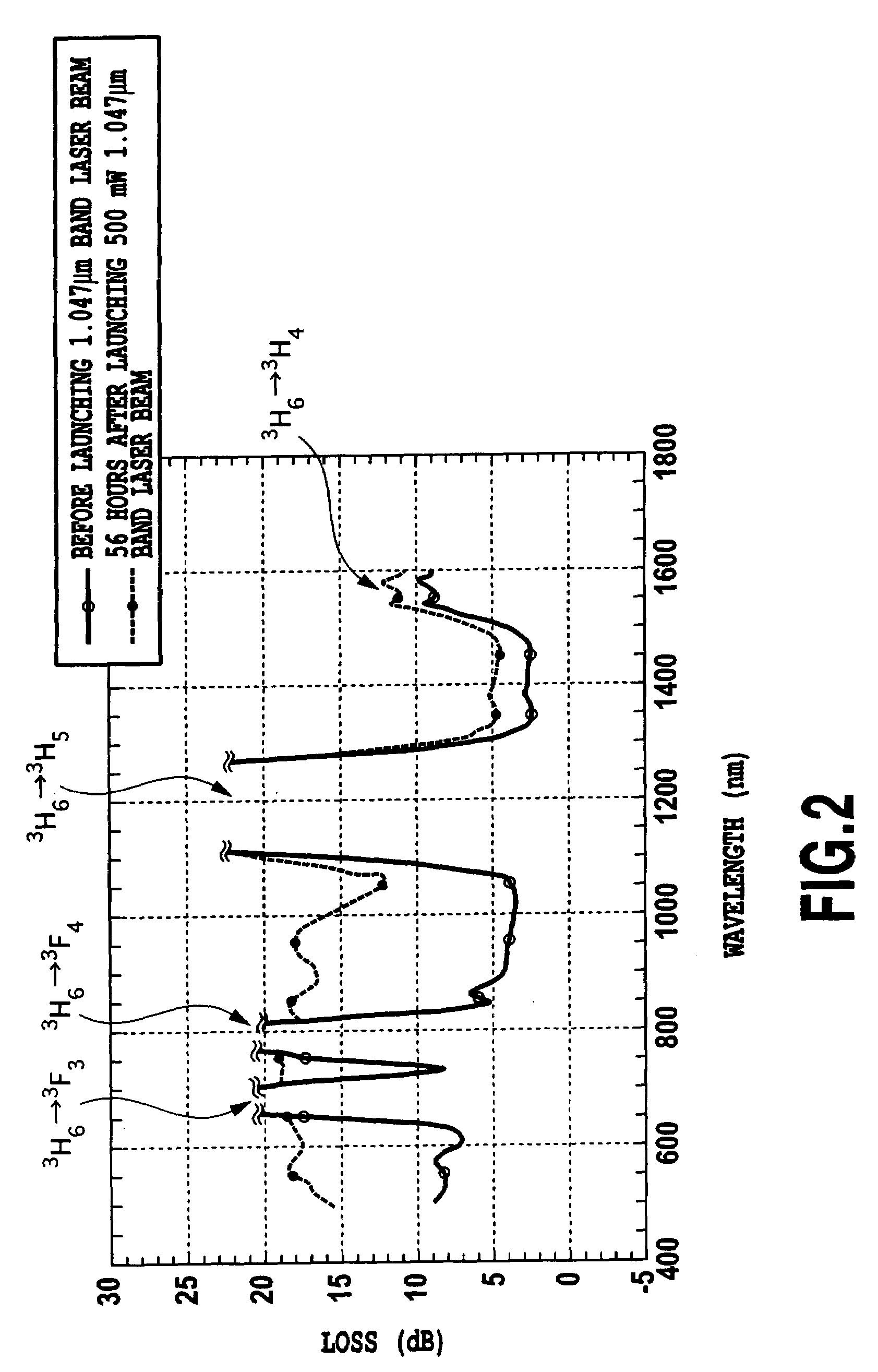Fiber laser, spontaneous emission light source and optical fiber amplifier
a fiber laser and light source technology, applied in the field of fiber lasers, spontaneous emission light sources, optical fiber amplifiers, can solve the problems of laser oscillation not being achieved, oscillation efficiency decreasing, etc., and achieves the effects of low cost, low cost, and low cos
- Summary
- Abstract
- Description
- Claims
- Application Information
AI Technical Summary
Benefits of technology
Problems solved by technology
Method used
Image
Examples
embodiment 1
[0076]In the first embodiment in accordance with the present invention, applications of the present invention to the 2.3 μm band and 1.8 μm band fiber lasers will be described. FIG. 10 shows a configuration of the first embodiment in accordance with the present invention. In FIG. 10, the reference numeral 1 designates a Tm3+-doped fiber serving as a gain medium; 2 designates a 1.2 μm band pumping source (consisting of a semiconductor laser with an oscillation wavelength of 1.21 μm, and a maximum output of 200 mW); 3 designates a dichroic mirror (that reflects 1.2 μm band light and transmits 1.6–2.4 μm band light); 4 designates a reflecting mirror (with the reflectance of 50% at 1.6–2.4 μm band, but transmits 100% of the 1.2 μm band light); 5 designates a 2.3 μm band and 1.8 μm band band-pass filter (with the transmission characteristics as illustrated in FIGS. 11A and 11B); 6 designates a condenser lens; and 7 designates a total reflection mirror (with the reflectance of 95% or more...
embodiment 2
[0089]In the second embodiment in accordance with the present invention, application of the present invention to a 2.3 μm band optical fiber amplifier will be described. FIG. 13 shows a configuration of the second embodiment in accordance with the present invention. In FIG. 13, the reference numeral 1 designates a Tm3+-doped fiber serving as a gain medium; 2 designates a 1.2 μm band pumping source (consisting of a semiconductor laser with an oscillation wavelength of 1.21 μm, and a maximum output of 200 mW); 3 designates a dichroic mirror (that reflects 1.2 μm band light and transmits 1.6–2.4 μm band light); and 6 designates a condenser lens.
[0090]Using the following fibers as the gain medium 1 was able to implement the following signal gains respectively:[0091]Using the Tm-doped fluoride fiber (with Tm additive density of 2000 wt. ppm, relative refractive index difference of 1.6%, and fiber length of 11 m) was able to achieve the signal gain of 8.3 dB for the 2.205 μm signal light ...
embodiment 3
[0098]In the third embodiment in accordance with the present invention, application of the present invention to a 2.3 μm band spontaneous emission source will be described. FIG. 14 shows a configuration of the third embodiment in accordance with the present invention. In FIG. 14, the reference numeral 1 designates a Tm3+-doped fiber serving as a gain medium; 2 designates a 1.2 μm band pumping source (consisting of a semiconductor laser with an oscillation wavelength of 1.21 μm, and a maximum output of 200 mW); 3 designates a dichroic mirror (that reflects 1.2 μm band light and transmits 2.2 μm band light); and 6 designates a condenser lens.
[0099]The configuration of FIG. 14 enables the Tm3+-doped fluoride fiber, Tm3+-doped tellurite fiber, Tm3+-doped germanate hydroxide glass fiber, Tm3+-doped chalcogenide glass fiber, Tm3+-doped bismuth based glass fiber and Tm3+-doped fluorophosphate glass fiber to achieve the spontaneous emission characteristics as illustrated in FIGS. 7 and 8. T...
PUM
 Login to View More
Login to View More Abstract
Description
Claims
Application Information
 Login to View More
Login to View More - R&D
- Intellectual Property
- Life Sciences
- Materials
- Tech Scout
- Unparalleled Data Quality
- Higher Quality Content
- 60% Fewer Hallucinations
Browse by: Latest US Patents, China's latest patents, Technical Efficacy Thesaurus, Application Domain, Technology Topic, Popular Technical Reports.
© 2025 PatSnap. All rights reserved.Legal|Privacy policy|Modern Slavery Act Transparency Statement|Sitemap|About US| Contact US: help@patsnap.com



